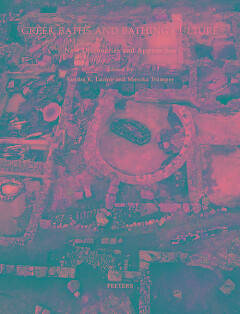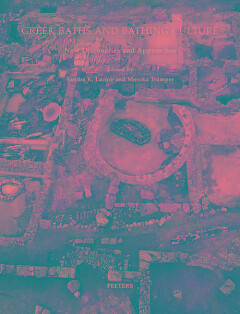
- Afhalen na 1 uur in een winkel met voorraad
- Gratis thuislevering in België vanaf € 30
- Ruim aanbod met 7 miljoen producten
- Afhalen na 1 uur in een winkel met voorraad
- Gratis thuislevering in België vanaf € 30
- Ruim aanbod met 7 miljoen producten
Zoeken
Greek Baths and Bathing Culture
New Discoveries and Approaches
€ 172,45
+ 344 punten
Omschrijving
This volume is the outcome of the first conference to take place on the topic of Greek baths and bathing culture, a central but hitherto neglected area in the field of ancient studies. Fifteen papers by an international group of archaeologists, art historians and ancient historians discuss Greek bathing culture from a socio-historical and cultural-anthropological perspective, resulting in a comprehensive reassessment that elucidates the sophistication of both the architecture and the culture of bathing throughout the Greek world. Individual papers examine bathing in the context of science, medicine and the cultural discourses coded in images on vases, while the majority focus on the archaeological evidence itself, as the crucial component in this reassessment that removes Greek baths from the traditional category of 'primitive predecessors' to Roman baths. From Greece and Egypt in the east, to Sicily, southern Italy and France in the west, new information from recent excavations is brought to bear on a wide range of related issues, including urban contexts, regional variations in experimental design and construction, innovations in technology, and the social meaning of the rise of bathing culture in the Hellenistic period. This better understanding of Greek baths adds a crucial element to the much debated question of the relationship between Greek and Roman bathing culture. This book also provides the first comprehensive catalog of all known Greek public baths (balaneia), including descriptions, plans and bibliographies, as a major reference tool for future comparative research on ancient bathing culture and beyond. catalog and papers combined make this a rich study of a topic of newly recognized significance in the ancient world.
Specificaties
Betrokkenen
- Uitgeverij:
Inhoud
- Aantal bladzijden:
- 358
- Taal:
- Engels
- Reeks:
- Reeksnummer:
- nr. 23
Eigenschappen
- Productcode (EAN):
- 9789042928978
- Verschijningsdatum:
- 13/05/2013
- Uitvoering:
- Paperback
- Formaat:
- Trade paperback (VS)
- Afmetingen:
- 211 mm x 274 mm
- Gewicht:
- 1247 g

Alleen bij Standaard Boekhandel
+ 344 punten op je klantenkaart van Standaard Boekhandel
Beoordelingen
We publiceren alleen reviews die voldoen aan de voorwaarden voor reviews. Bekijk onze voorwaarden voor reviews.










